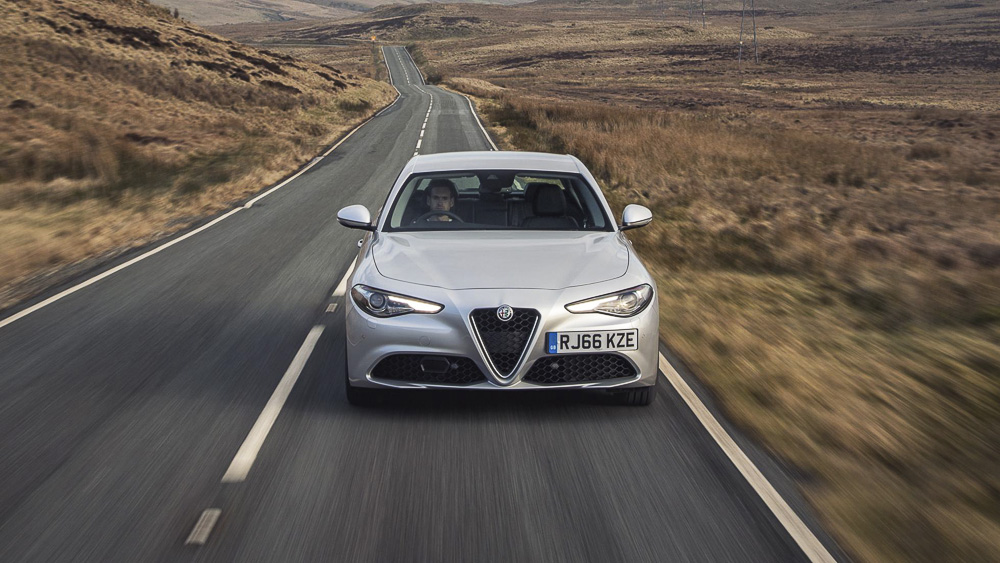
This isn’t the car Chris Harris drifted through a Giulia-shaped archway, then?
Emphatically not. That was the 503bhp twin turbo V6, £61,000 Quadrifoglio. This is the one people will actually buy, the £32,850 2.2-litre 180bhp turbo diesel. In Super trim it’s priced bang on against the £33,190 BMW 320d M Sport. There are other engine options too – a detuned 150bhp diesel starting at £30,995, and a 2.0-litre turbo petrol with 197bhp. That’s the entry-level model, costing from £29,480.
A petrol Alfa appeals more to me than a diesel…
Hold that thought for now. What we have here, no matter how it’s powered, is a very good looking small sports saloon. We’ve included a pic of our test car in the gallery – it was in £695 Silverstone Grey with the £750 18-inch five hole dark alloys and it looked tremendous. It stands out, has a strong light signature and comes across as downright desirable. You’d be mad not to want a Giulia.
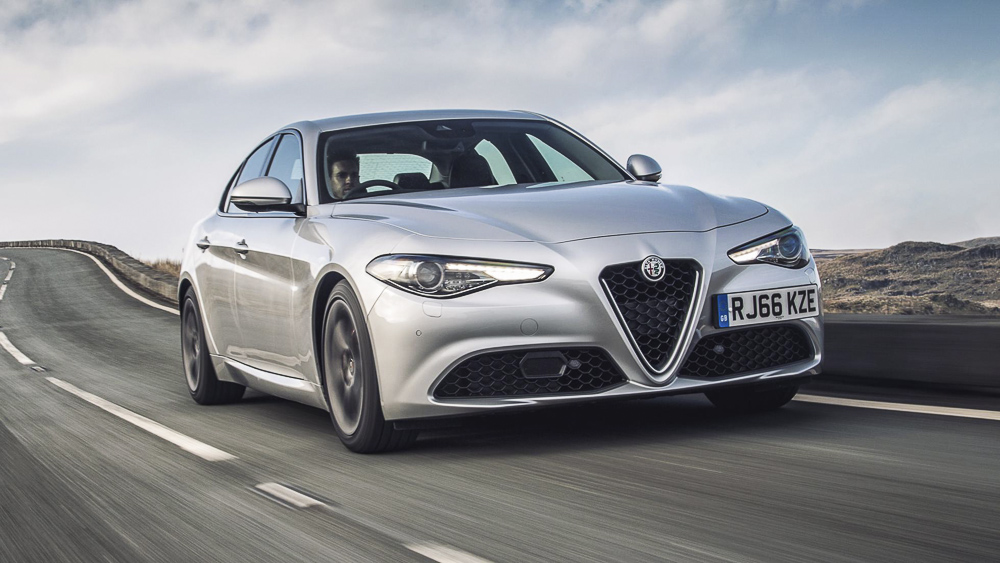
But that’s always been the way with Alfas. Then you get down to the nitty-gritty…
Let’s start inside. So you get in through a door that is small with a B-pillar that is too far forward, but nestle down into a decent seat with a great driving position. The slim-rim steering wheel is genuinely lovely to hold and the paddles behind it (part of the £1,950 Performance Pack which includes an LSD and active suspension) are possibly the nicest, most tactile slivers of aluminium fitted to any production car. You can’t help but run your fingers up and down them.
In fact you have to spend a bit of time in the car before you spot any Alfa-isms. They are there, though: the one-touch indicators have to be cancelled (after lane changes and the like) by pushing them in the other direction. Push too far, of course, and you indicate to come back out. And the seat belt clip-ins are mounted to the floor, not the seat itself, so if you like to sit high in the car, the buckles disappear down the side of the seat, making them hard to use.
But it’s an Alfa, it’s the law to have the seat slammed.
It is, and aside from these very minor bugbears – the kind of things that only the Germans bother to spend time and millions of euros eradicating – the Alfa’s cabin is handsome and user-friendly. The architecture is attractive, there’s enough storage, the USB sockets are accessible, the infotainment menus work logically via a rotary controller. There’s not much wrong with it. OK, it’s not a system that wows you, and the dark plastics could be more tactile and the cabin more solid, but on the whole this is a car that’s easy to get on with and fits around you.
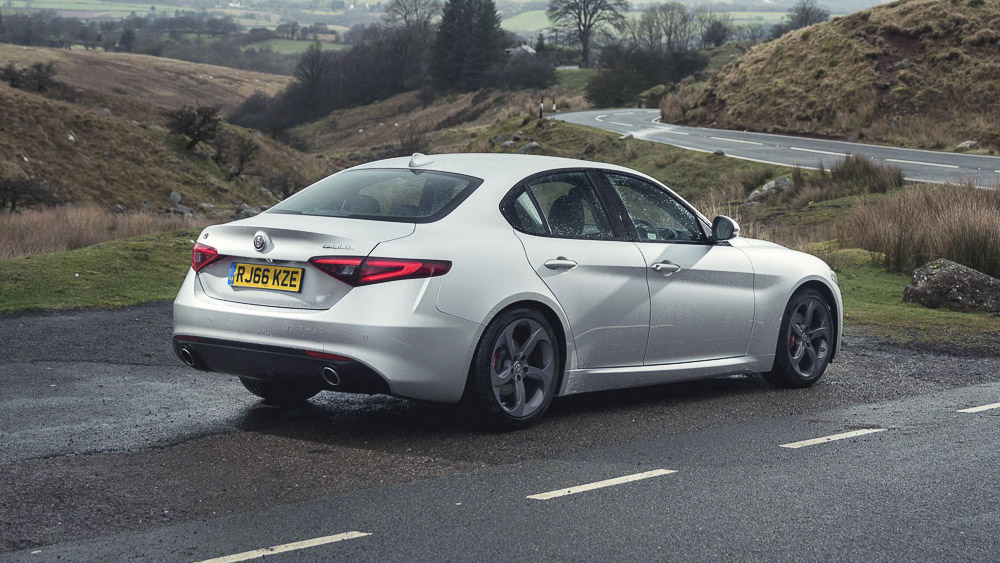
How’s practicality?
More of a mixed bag: the 480-litre boot is spacious enough, but rear legroom is modest at best and the confluence of A-pillar and wing mirror does damage visibility at junctions.
Forget it - I only really care about the driving.
Ah, the meat of the Alfa experience. So, there’s absolutely nothing wrong with the diesel. All Giulias in the UK are equipped as standard with the ZF eight-speed automatic and that helps make it a very drivable thing. Twist the DNA dial to D-for-Dynamic and throttle response is good, wind it back to A-for-All-weather and it’ll disengage the clutch when you lift off, and help the Giulia knock along at well over 50mpg (5.6L/100km). In mixed driving over two days I got 6L/100km.
And it’s rapid enough alright. 180bhp and 450Nm of torque make easy work of the 1445kg kerbweight. 0-100kph is dealt with in 7.1 seconds, top speed is 230kph. In reality it doesn’t feel quite that fast because after the initial torque surge the acceleration backs off and the motor becomes harsher and more intrusive as the needle homes in on the 5,000rpm redline. 3,500rpm is the natural change up point.
It might be an all-new, all-aluminium, all singing and dancing engine with a variable geometry turbo and a balancer shaft, but it’s not as hushed, smooth and satisfying as you might expect. Nothing wrong with the gearbox at all, but a sneaking suspicion that petrol might deliver the Alfa-ness that the diesel doesn’t.
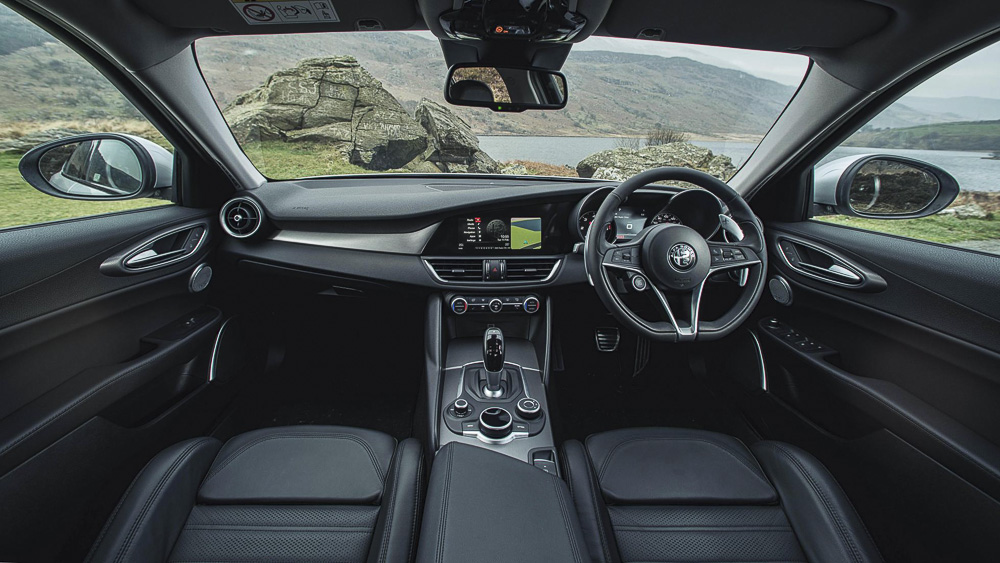
Does it handle like an Alfa should?
On the whole yes – it feels as light on its feet as that kerbweight suggests, so changes direction easily via its sharp, quick steering. A 320d is a more polished back road performer, but the Alfa is an engaging and interesting car to drive. You’ll enjoy it.
But the ride and refinement do suffer slightly. While it’s good at dealing with the larger scale rise and fall of a road, the 18s do patter over smaller scale stuff. You do notice that it doesn’t ride as smoothly as you might hope, and that there’s enough road noise in the cabin to make you realise the standard sound system’s speakers aren’t the best.
Concentrate hard and you realise the drivetrain doesn’t run with the panache of an equivalent German saloon – the algorithms that run the engine and gearbox haven’t been so assiduously tuned. But you can say the same of the Jaguar XE, too.
Enough to put you off?
No, I don’t think so. There’s a lot to like here. The Giulia is compelling simply because it’s not German, it is very handsome, it is fun to drive and something you’d be proud to own.
I haven’t driven the 200bhp petrol yet, but overall I have a suspicion it would be the more enticing model. Diesel does the job in terms of efficiency and economy, but it’s too plodding and flat to be satisfying in a chassis as sparky as this.
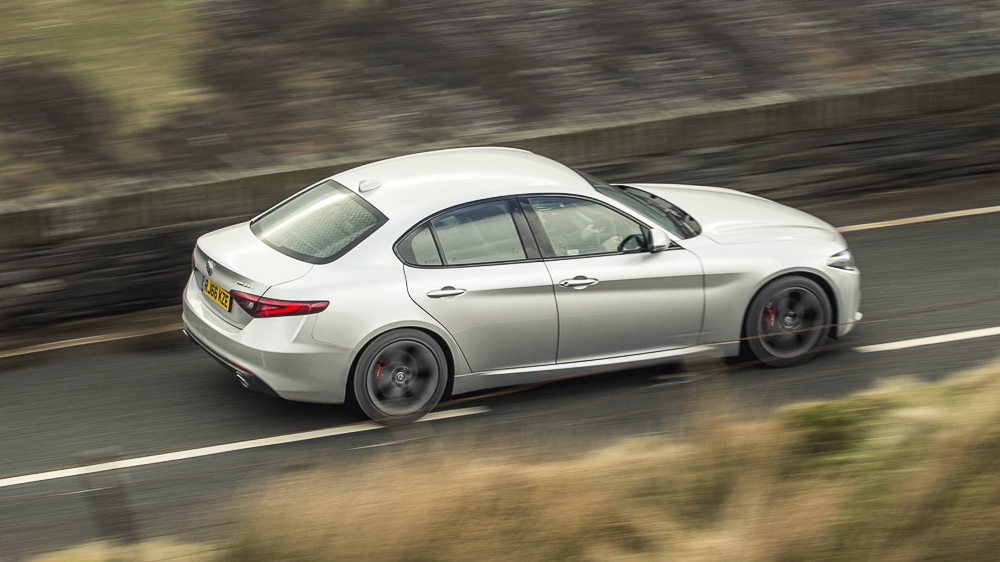
What about costs?
Well, the 109g/km, 67.3mpg (4.2L/100km) diesel does the numbers it needs to to match anything from Jaguar, Audi, BMW or Mercedes. And lease rates look attractive too. You should be able to get a Giulia for about £370 per month, which is smack on against rivals. So it stacks up.
If it was me, I’d be happy to take a three or four year punt on a Giulia, simply because it’s a less generic, more enticing car than anything else in its class – there’s no other saloon out there with the same personality that still measures up on costs. That makes the Giulia an attractive prospect. But have a look at the 138g/km, 5.9L/100km, 6.6-to-100kph petrol before you decide it has to be diesel.
